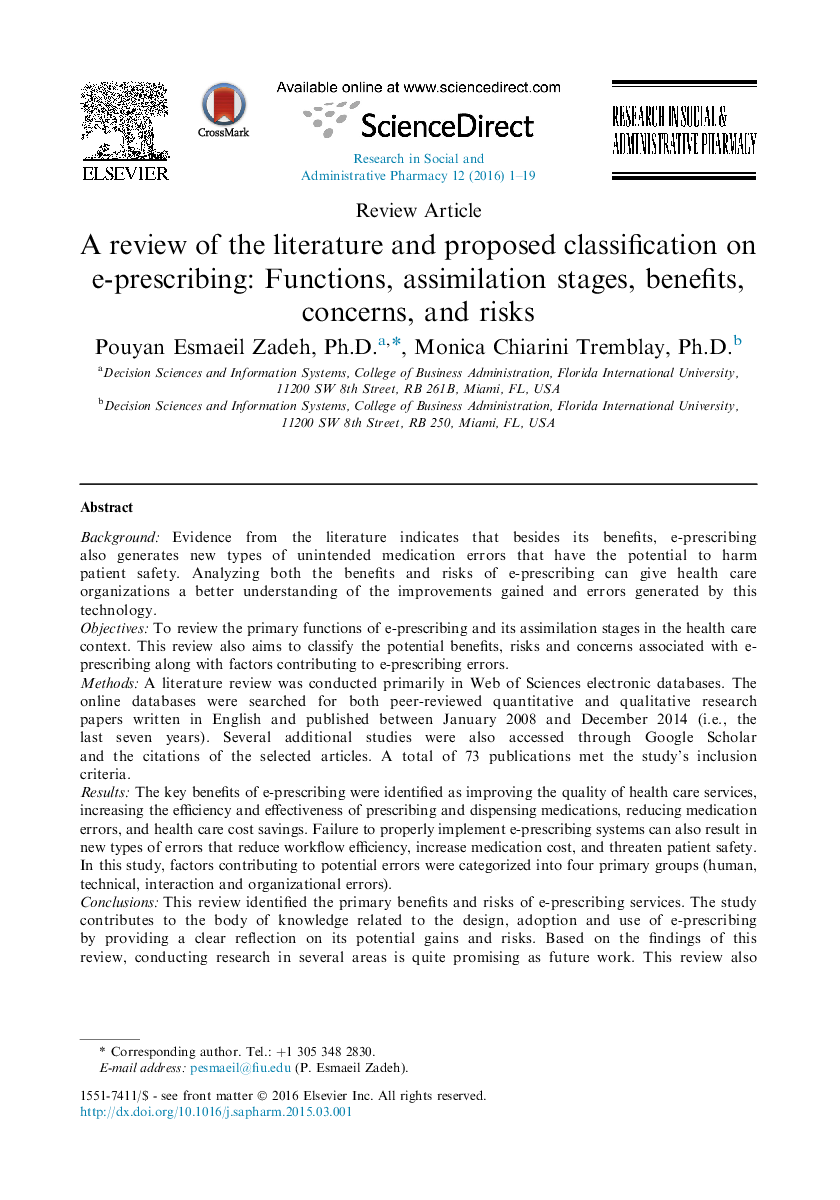| Article ID | Journal | Published Year | Pages | File Type |
|---|---|---|---|---|
| 2508259 | Research in Social and Administrative Pharmacy | 2016 | 19 Pages |
BackgroundEvidence from the literature indicates that besides its benefits, e-prescribing also generates new types of unintended medication errors that have the potential to harm patient safety. Analyzing both the benefits and risks of e-prescribing can give health care organizations a better understanding of the improvements gained and errors generated by this technology.ObjectivesTo review the primary functions of e-prescribing and its assimilation stages in the health care context. This review also aims to classify the potential benefits, risks and concerns associated with e-prescribing along with factors contributing to e-prescribing errors.MethodsA literature review was conducted primarily in Web of Sciences electronic databases. The online databases were searched for both peer-reviewed quantitative and qualitative research papers written in English and published between January 2008 and December 2014 (i.e., the last seven years). Several additional studies were also accessed through Google Scholar and the citations of the selected articles. A total of 73 publications met the study's inclusion criteria.ResultsThe key benefits of e-prescribing were identified as improving the quality of health care services, increasing the efficiency and effectiveness of prescribing and dispensing medications, reducing medication errors, and health care cost savings. Failure to properly implement e-prescribing systems can also result in new types of errors that reduce workflow efficiency, increase medication cost, and threaten patient safety. In this study, factors contributing to potential errors were categorized into four primary groups (human, technical, interaction and organizational errors).ConclusionsThis review identified the primary benefits and risks of e-prescribing services. The study contributes to the body of knowledge related to the design, adoption and use of e-prescribing by providing a clear reflection on its potential gains and risks. Based on the findings of this review, conducting research in several areas is quite promising as future work. This review also has practical implications for health care providers, e-prescribing software vendors and policy makers.
